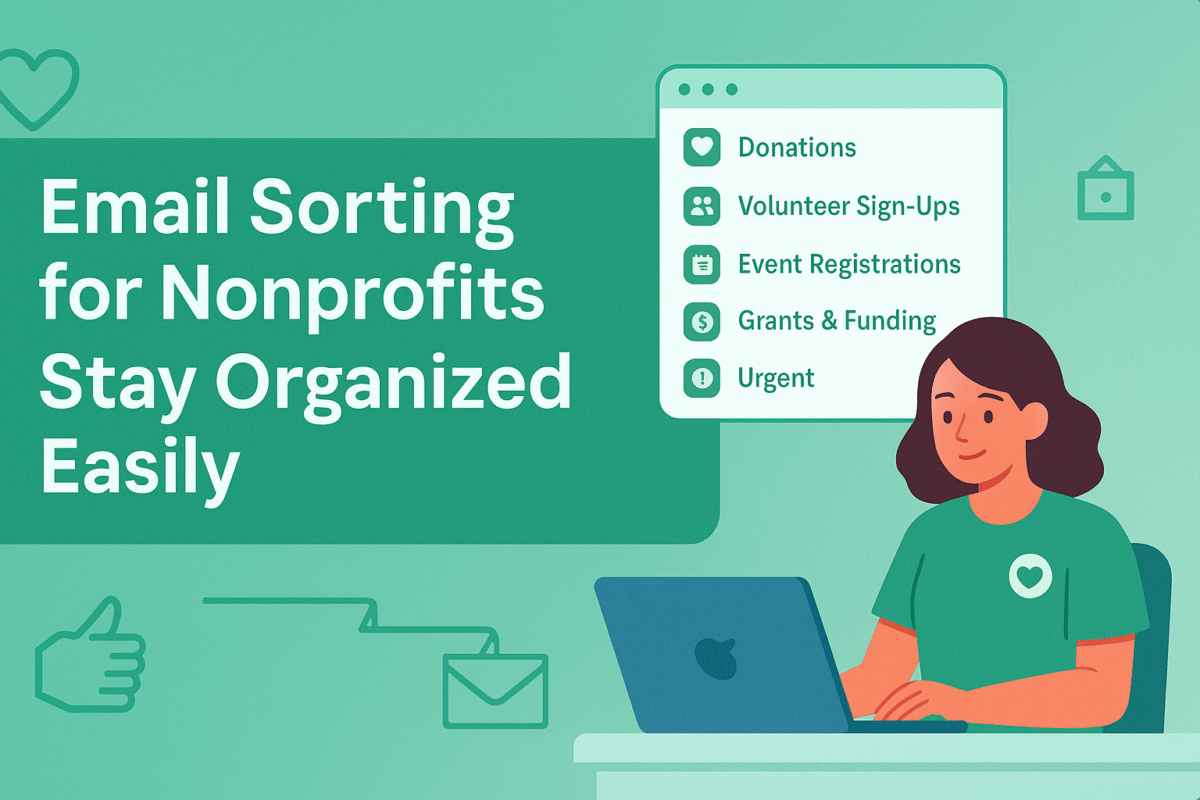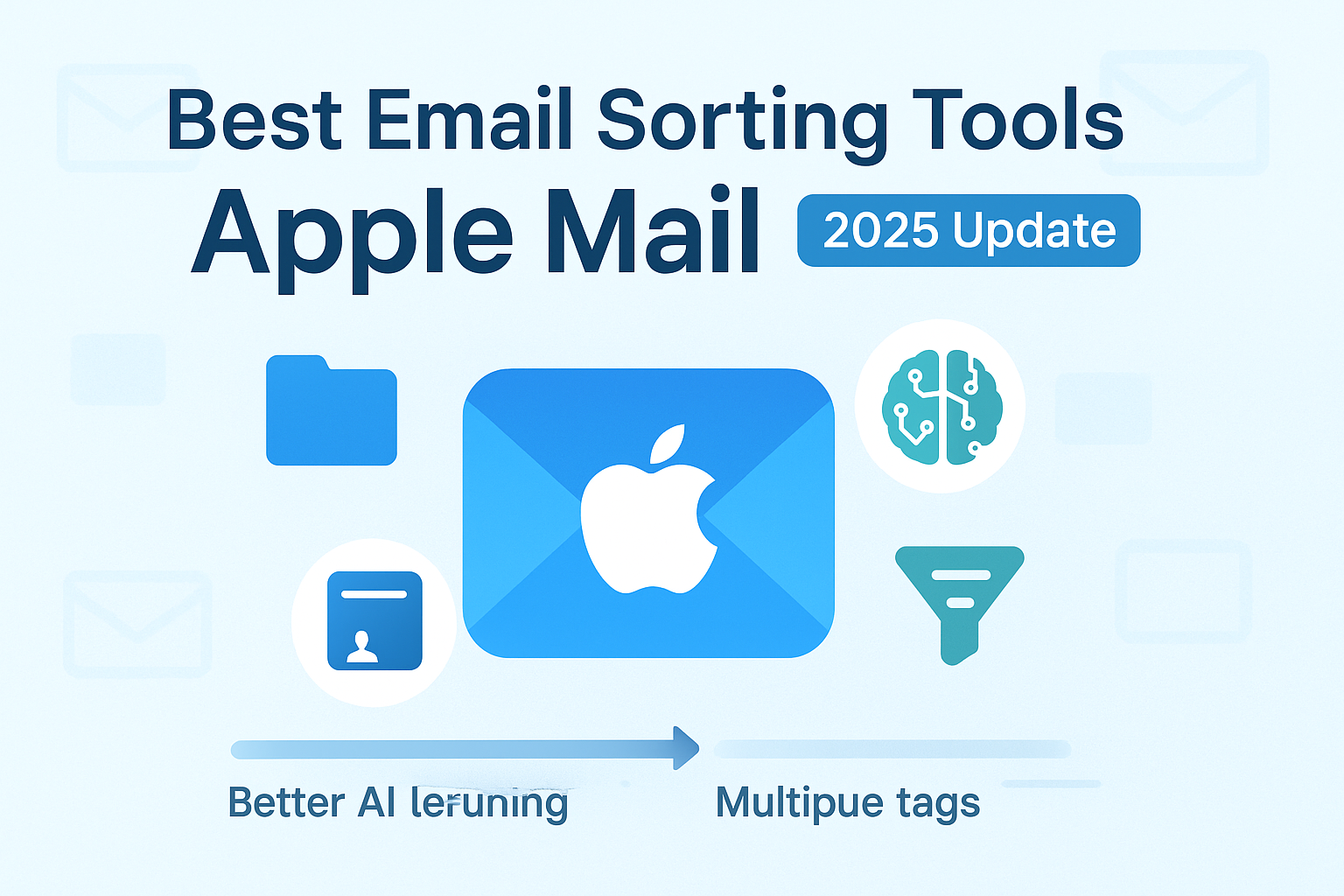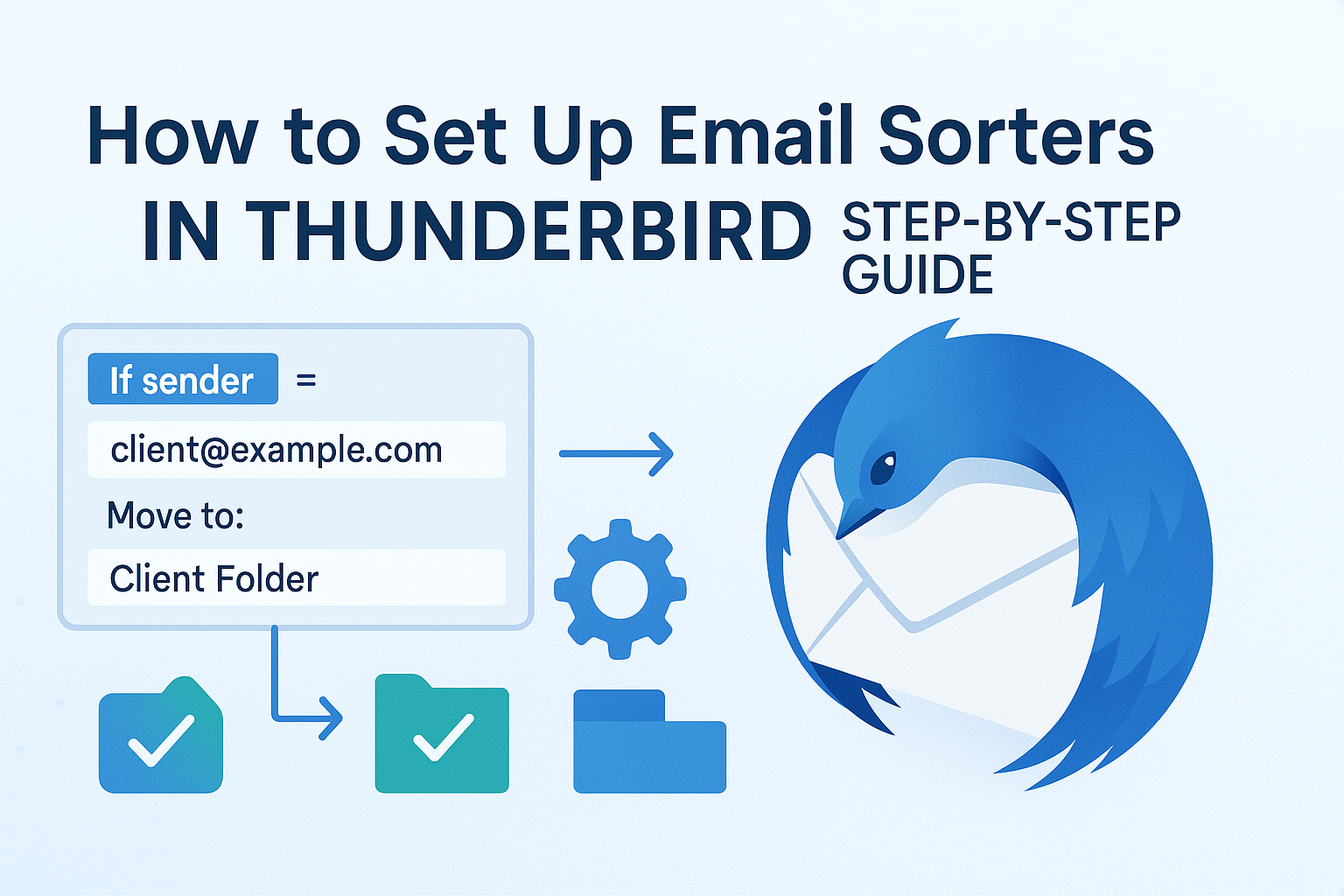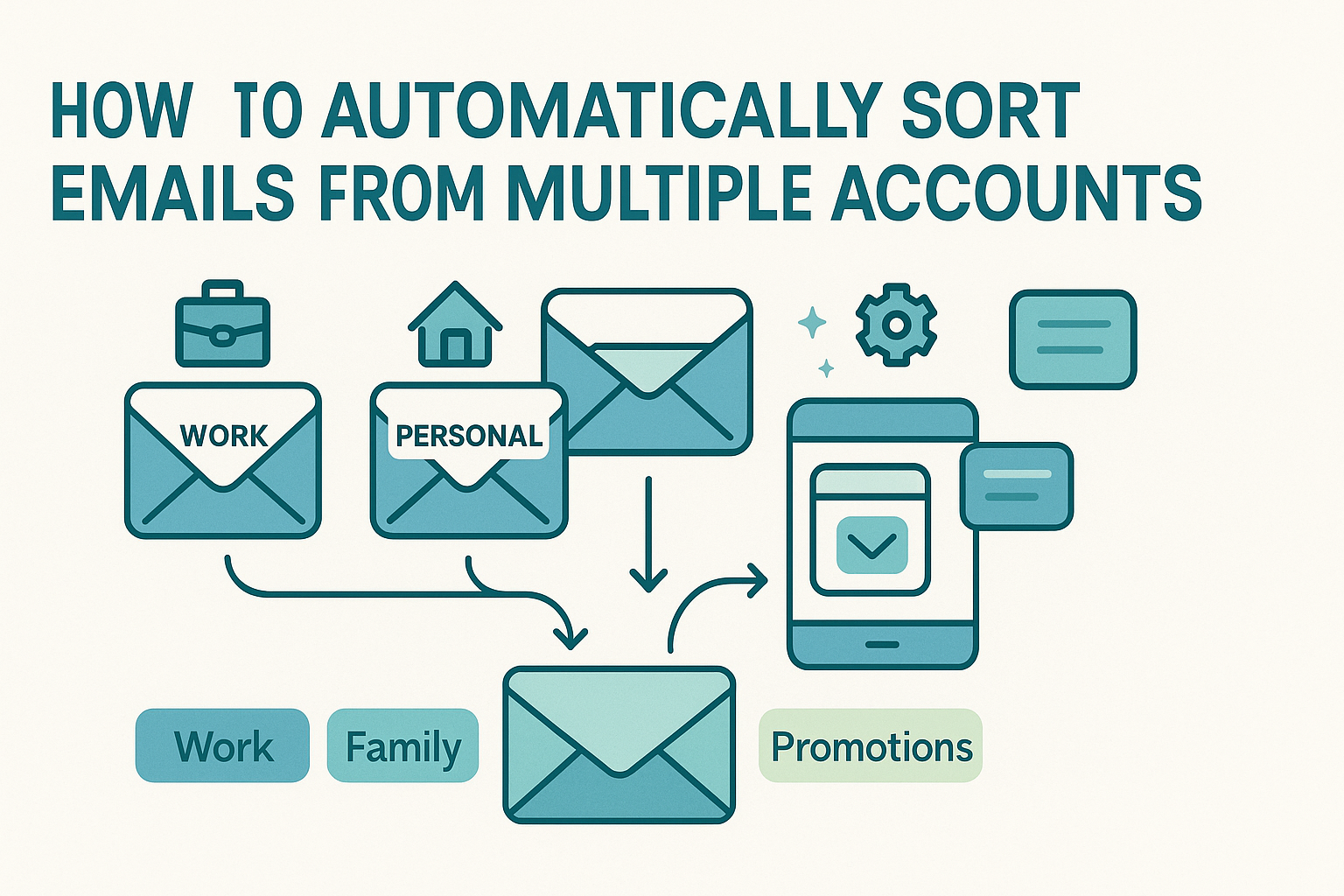Email sorting for nonprofits is one of the simplest ways to stay organized, especially when juggling donor inquiries, volunteer coordination, event planning, and funding updates.
Without a clear system, important messages get buried in overflowing inboxes, leading to missed opportunities, delayed responses, and internal confusion.
By automating inbox organization, nonprofits can quickly prioritize urgent emails, route tasks to the right team members, and maintain a professional image with funders and partners.
Start by using filters, tags, and shared inbox tools to group messages by project or department, so your team can focus less on admin and more on making an impact.
Why Email Organization Matters for Nonprofits
Nonprofits juggle a wide range of communications, from donor thank-you messages and volunteer inquiries to grant agency updates and community outreach. Without robust systems, important emails get overlooked, deadlines slip, and critical stakeholder relationships falter. Unlike commercial teams that may focus on sales pipelines, nonprofit inboxes power mission-centric operations. Maintaining organized email workflows supports timely donor engagement, smooth volunteer coordination, and effective program administration. By setting up email sorting, nonprofit organizations can reduce administrative burden and empower their team to focus on what truly matters, making an impact.
What Are Nonprofit Email Workflows?
Nonprofit email role complexity mirrors that of small businesses, which efficiently manage PR, customer feedback, sales, and support, all through organized email systems. In nonprofit settings, program coordinators might receive volunteer sign-ups, while fundraising staff monitor donation receipts and sponsorship requests. Meanwhile, leadership may handle grant-related correspondence and compliance reporting. These diverse streams demand differentiation in urgency and context. Nonprofit teams benefit by applying structured sorting logic similar to small businesses; by automating category assignments (like “Donor,” “Volunteer,” “Grant”), they save time and maintain clarity even as communication volume grows.
Adopting Small-Business Email Practices
Nonprofits can take a page from small-business playbooks and turn chaotic inboxes into structured, actionable systems. Small businesses that manage customer queries, invoices, and marketing through organized email setups provide a useful blueprint. By applying similar techniques, like auto-tagging by sender domain, sorting by topic, and maintaining standardized folder structures, nonprofit teams can bring clarity to diverse communications.
For example, an email from “@volunteerhub.org” can automatically land in a “Volunteer Inquiry” folder, while messages with subject lines containing “Donation” flow into “Donor Relations.” This approach, referred to as “email sorting for small businesses,” brings professionalism to nonprofit operations without added overhead. Making these adjustments doesn’t require large teams or budgets, it just takes thoughtful setup to align inboxes with organizational priorities.
Setting Up a Nonprofit-Focused Sorting Framework
Creating a robust folder and label schema tailored to nonprofit workflows is key to effective email sorting. Begin by identifying your most common communication categories—such as donors, volunteers, grants, events, administration, or partnerships. Create these categories as folders or labels in your email system, ensuring naming is consistent across the organization and shared inboxes.
For instance, a message related to an upcoming community event might carry an “Events → Planning” label, while grant approvals could land under “Grants → Received.” Employ automated rules that detect keywords or sender domains to assign emails correctly. Even messages that don’t fit neatly into defined groups should be sorted into anOther” folder, which can be reviewed for rule refinement. This structured system builds transparency across the team, makes handoffs smoother, and ensures priorities are visible and actionable.
Cost‑Effective and Free Sorting Options
Nonprofit budgets are often stretched thin, but that doesn’t mean inbox systems should suffer. There are numerous free or low-cost email sorting tools that deliver robust organizational features without requiring heavy investment. Some offer generous free tiers that unlock basic filtering, tagging, and rule creation—perfect for small nonprofits managing volunteer coordination or event inquiries. Other providers offer discounted nonprofit pricing, giving access to premium capabilities like shared inboxes, automated workflows, and multi-user collaboration. These tools enable mission-driven organizations to maintain structured email systems without compromising donor or volunteer engagement.
For nonprofits seeking budget-friendly options, a curated collection of free email sorting apps can be a valuable starting point. These applications include essentials like keyword-based filters, smart labels, and mobile access, ensuring professional communication even without a paid solution. By choosing tools aligned with organization size and user needs, nonprofits can avoid unnecessary complexity while still reaping significant productivity gains.
Time‑Saving Email Tools That Boost Workflow
Sorting isn’t just about tidying emails, it’s about freeing up staff time for mission-critical tasks. Modern email sorters offer automation features that do more than file messages, they trigger follow-up reminders, flag outgoing pledges, or highlight forgotten event confirmations. Tools that automatically filter messages containing specific keywords, attachments, or sender details can drastically reduce manual processing. Some platforms offer AI-powered assistance that learns user patterns, automatically sending refund receipts or volunteer acknowledgment notes based on past behavior. This kind of intelligent sorting is the type of time‑saving email tool that nonprofit teams can’t afford to miss.
By deploying these features, staff no longer needs to sift through crowded inboxes. Instead, they spend time on planning, fundraising, community engagement, and relationship building, while the email sorter handles low-level administrative duties. In busy periods, such as campaign seasons or event registration spikes, having automated processes ensures no message is overlooked and reduces stress on lean teams.
Collaboration Through Shared Inboxes
Nonprofit teams often rely on inboxes like “volunteers@”, “donors@”, or “info@” that multiple staff members access. Without coordination, these shared accounts can become chaotic, and the same inquiry may be answered multiple times, or not at all. Implementing shared inbox email sorting helps nonprofits manage these collaborative spaces effectively. With well-designed rules, incoming emails can be routed into specific folders, such as “Volunteer Requests,” “Donation Queries,” or “Event Information”, and tags or assignments can be used to signal who is handling each conversation. This approach reduces overlaps, maintains accountability, and ensures clear handoffs between team members.
Routing Leads and Donor Messages Automatically
Efficient fundraising and volunteer outreach hinges on timely responses. Nonprofits can borrow tactics from small-business strategy using small business lead routing techniques. When an email arrives from a major donor or potential sponsor domain, sorting tools can detect terms like “pledge,” “sponsorship,” or “volunteer application,” automatically directing that email into the appropriate folder or assigning it to a designated team member. These routing workflows make sure high-priority communications are flagged immediately and handled by the right person, often within hours, enhancing donor relationships and boosting engagement.
Measuring Impact with Productivity Metrics
To know if your email sorting efforts are working, tracking performance is key. Metrics like average response time, backlog volumes in volunteer or donor queues, and folder-by-folder sorting accuracy indicate where rules are succeeding, or need adjustment. For instance, if the “Volunteer Requests” inbox accumulates dozens of unfiltered messages, it may indicate missing rules or misclassified emails. Organizations that track response speed to donation inquiries report stronger donor retention. Nonprofits can use email sorting success metrics to assess improvements over time, justify investments, and communicate operational gains to stakeholders.
Comparing Top Email Sorting Tools for Nonprofits
When selecting an email sorting solution, nonprofits must weigh cost, core functionality, and ease of use. Ideal platforms offer basic filtering and tagging at no cost, while affordable upgrades provide shared inbox support, collaboration tools, and automation, features usually reserved for larger organizations. For example, tools that allow group rule sharing or assign tags for volunteer requests bring big-team functionality to smaller budgets. Many services offer nonprofit discounts, so exploring options while referencing a comprehensive directory like top email sorting software can help teams get full value without overspending.
Consider whether tools integrate with your donor CRM or volunteer management systems. If a solution can automatically log email interactions in your fundraising or volunteer platform, it boosts productivity and saves hours of manual entry. Other desirable features include mobile accessibility, attachment handling, calendar triggers, and simplified backup options for folder structures. By comparing each platform’s free tier and premium options, nonprofits can find a match that fits both technical needs and budget limitations.
Implementation Strategy and Ongoing Maintenance
Rollout begins with a small test group, perhaps two staff members or one shared volunteer email account. Start by defining folder structures that mirror workflows: such as “Donors,” “Volunteers,” “Events,” and “Admin.” Build basic filters first, like sorting emails with “mydonor@gmail.com” into “Donors”, then expand to more nuanced rules, such as routing event RSVPs or volunteer inquiries using keyword detection. Document each step clearly, train users with simple walkthroughs, and label messages with temporary tags like “AutoSorted Review” to monitor filtered results.
After one to two trial cycles, collect feedback on misclassified emails or workflow friction. Refine rules accordingly and add automation like tagged reminders or auto-replies for donor confirmations. Roll out the system universally, using shared rule libraries where possible. Assign responsibility for quarterly audits, reviewing folder usage, removing obsolete tags, correcting misrouting, and updating templates.
Ongoing maintenance is critical; email habits change as programs evolve. Plan for biannual reviews tied to campaign changes or team turnover. Ensure documentation is updated and new users are trained on rule logic and tag naming. This process preserves system consistency and prevents inbox drift.
Troubleshooting Common Inbox Issues
Even solid email sorting systems can falter with unexpected changes. When emails bypass filters or end up in the wrong folder, start by checking if the folder name was renamed or the filter conditions altered. Broad keyword filters may unintentionally capture unrelated emails; refining to include domain names or specific phrases can help. Assigning tags manually after rollout may break downstream automation, ensure that shared rules take precedence over manual edits.
Shared inboxes may display duplicate threads if ownership tags aren’t applied consistently; in such cases, clarify handoff guidelines and ensure filter order places assignment rules before archiving actions. Auto-replies should be monitored to avoid loops where donor confirmations trigger duplicate sent messages. If needed, restrict auto-reply to first-time emails only.
Lastly, maintain a log of changes and tag review alerts to perform fast rollbacks. Keeping an audit trail of rule and folder modifications helps diagnose changes and preserve system integrity.
Conclusion
Effective email sorting transforms nonprofit inboxes into powerful coordination tools. Through structured folder hierarchies, keyword-based rules, shared inbox assignment, and simple automation—staff can reclaim time to focus on mission-critical work like donor stewardship, volunteer coordination, and community impact. Scaling these systems is both achievable and affordable, even in lean teams. By measuring response times and backlog volume, nonprofits can continually refine processes. Embracing smart email practices ultimately supports stronger relationships and mission success.
Frequently Asked Questions
Can sorting tools integrate with nonprofit donor systems?
Some platforms offer integrations with popular CRM systems. You can also use Zapier to automate moving email data into donor records or volunteer sheets.
What ROI can we expect from better inbox sorting?
Most nonprofits see faster response rates, fewer missed inquiries, and higher volunteer and donor satisfaction—often measurable within months as reduced backlog and increased engagement.
Are free email sorting apps reliable?
Many free apps include core features like keyword filters, labeling, and mobile access. For advanced needs—like shared inboxes—explore nonprofit discounts on premium offerings.
How often should we audit sorting rules?
Quarterly is ideal, but more frequent review may be needed during busy campaign periods or after organizational shifts.
Can sorting systems handle communications for multiple programs?
Yes. By using sub-folder structures like “Events → 2025 Gala” or “Grants → Education,” teams can manage multiple initiatives in a single inbox while maintaining clarity and focus.




